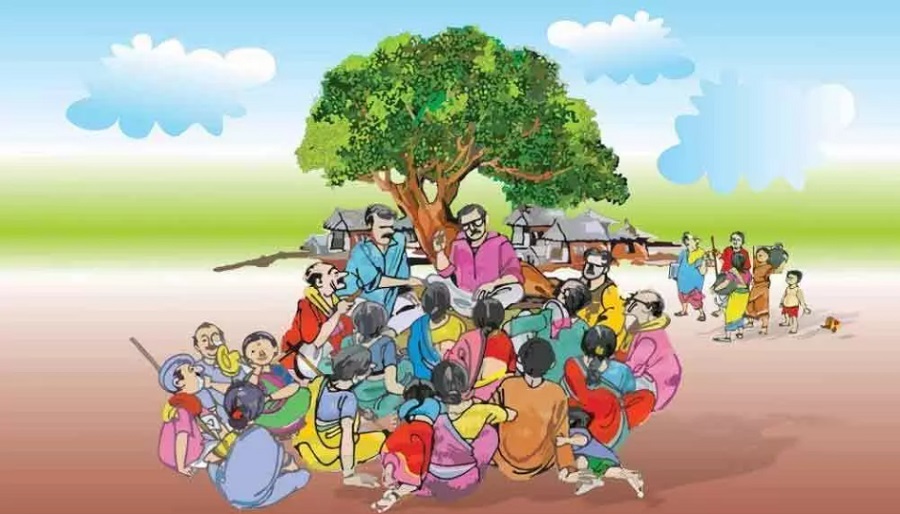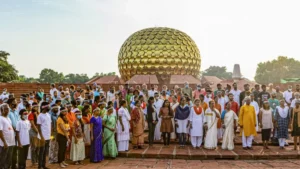The Government of India, in collaboration with the Government of Madhya Pradesh, will commemorate National Panchayati Raj Day on April 24, 2023, at Rewa in Madhya Pradesh. The event is part of the Azadi Ka Amrit Mahotsav (AKAM) – Samaaveshi Vikaas (Inclusive Development) campaign, which aims to celebrate people’s participation in the saturation of people-centric schemes. The Prime Minister will be the chief guest and will address the elected representatives and functionaries of Panchayati Raj Institutions as well as Special Gram Sabhas across the country. The launch of an integrated e-GramSwaraj and GeM portal for public procurement at the Panchayat level and the distribution of SVAMITVA Property Cards to select beneficiaries will be among the highlights of the event.
Buy Prime Test Series for all Banking, SSC, Insurance & other exams
Understanding the Concept of Panchayati Raj Institution (PRI) in India
Panchayati Raj Institution (PRI) is India’s rural local self-government system established by the 73rd Constitutional Amendment Act, of 1992. PRI manages local affairs and rural development through elected local bodies.
Evolution of the Panchayati Raj System in India
The evolution of the Panchayati Raj in India can be divided into several periods from a historical perspective. In the Vedic era, the concept of the inclusion of a spiritual man in a group of five persons, known as ‘Panchayatan’, was prevalent, but it later vanished. The democratic bodies at the local level included Sabha, Samiti, and Vidatha, mentioned in the Rigveda, which the king had to consult regarding certain functions and decisions. In the Epic era, the administration was divided into Pur and Janpad, or city and village, with a Caste Panchayat in every state, and one person elected by the Caste Panchayat as a member of the king’s Council of Ministers. The ancient period saw the existence of a well-established system of local government run on traditional patterns, with the headman and a council of elders playing a crucial role in village life. During the medieval period, the self-government of villages eroded due to the casteism and feudalistic system of governance under the Mughal rule.
During British rule, village panchayats lost their autonomy and became weak. The Mayo’s resolution of 1870 gave impetus to the development of local institutions by enlarging their powers and responsibilities and introduced the concept of elected representatives in urban municipalities. Lord Rippon in 1882 provided a democratic framework to these institutions by mandating that all boards should have a two-thirds majority of non-officials who had to be elected. Local self-government institutions received a boost with the appointment of the Royal Commission on Centralization in 1907, which recognized the importance of panchayats at the village level. The Montagu Chelmsford reforms of 1919 transferred the subject of local government to the domain of the provinces and recommended complete independence for them from external control. However, due to organizational and fiscal constraints, these panchayats remained limited in number, scope, and functions.
After the Constitution came into force, Article 40 mentioned Panchayats, and Article 246 empowered the state legislature to legislate on any subject relating to local self-government. However, the inclusion of Panchayats into the Constitution was not unanimously agreed upon. Despite constitutional provisions, Panchayati Raj institutions continued to be weak until the 1980s when the government initiated the Panchayat Raj Institutions scheme. The 73rd Amendment Act of 1992 made Panchayati Raj institutions a constitutional mandate and provided for the devolution of powers, functions, and finances to the panchayats. Today, Panchayati Raj institutions play a vital role in grassroots democracy and development in India.
Salient features of Panchayati Raj
- Gram Sabha: village assembly of registered voters, can perform functions entrusted by state legislature
- Three-tier system: PRI at the village, intermediate, and district levels for uniformity (except in states with <20 lakh population)
- Election: direct election of members at all levels, indirect election of a chairperson, state legislature determines election rules
- Reservation of seats: seats reserved for Scheduled Castes, Scheduled Tribes, and women; one-third of total seats to be filled by direct election reserved for women; state legislature can make reservations for backward classes
- Duration of Panchayats: five-year term, can be dissolved early, new elections held before the natural term expires or within six months of dissolution
- Qualification & Disqualification: disqualification under laws for state legislature elections, minimum age of 21, state legislature determines disqualification authority
- State election commission: oversees electoral rolls and conduct of elections, governor appoints commissioner who can only be dismissed for reasons specified for dismissing a judge
- Powers and functions: state legislature endows panchayats with necessary self-government powers and authority
- Finances: panchayats are authorized to levy, collect, and appropriate taxes, receive grants-in-aid, establish funds for all money
- Finance Commission: governor establishes an annual commission to review finances, make recommendations, and provide findings for the central finance commission
- Audit: state legislature determines the auditing mechanism for PRI
- Application to UT: president can direct application to union territories with specified modifications
- Exempted areas: Nagaland, Mizoram, Meghalaya, scheduled areas, tribal areas, hill area of Manipur, and Darjeeling district of WB are exempt unless provisions extended by parliament under specified modifications
- Bar to the interference of court: courts cannot interfere in electoral or delimitation matters, state legislature determines election petition mechanism
- 11th schedule: identifies areas under PRI purview.
The celebration of National Panchayati Raj Day is a significant step towards creating awareness and building momentum for India@2047 and achieving the global SDGs agenda in the local context by 2030. The event will witness the participation of more than one lakh participants, including representatives of Panchayati Raj Institutions, other stakeholders, and residents/rural masses. An exhibition showcasing different thematic stalls will also be set up at the venue of the national function of NPRD-2023 for the benefit of the general public, highlighting initiatives and achievements under various government programs such as Pradhan Mantri Awas Yojana (Gramin), Swachh Bharat Mission – Gramin (SBM-G), Amrit Sarovar, Madhya Pradesh State Rural Livelihood Mission, Rural Tourism Development (Home Stay), SVAMITVA, Jal Jeevan Mission, and others.




 Which City is known as the Christmas Cap...
Which City is known as the Christmas Cap...
 Auroville Foundation May Gain Institutio...
Auroville Foundation May Gain Institutio...
 Elon Musk Becomes First Individual to Re...
Elon Musk Becomes First Individual to Re...







